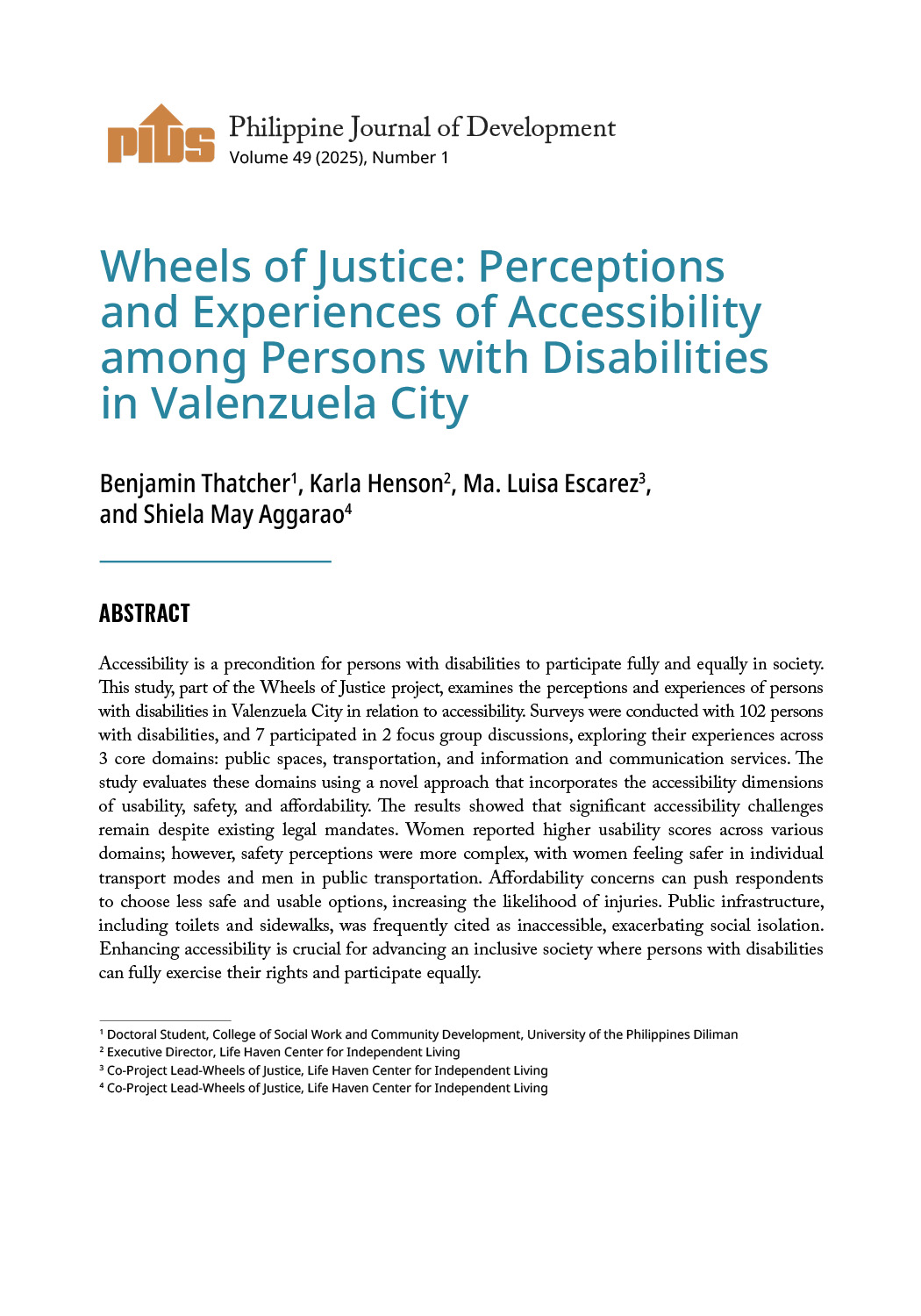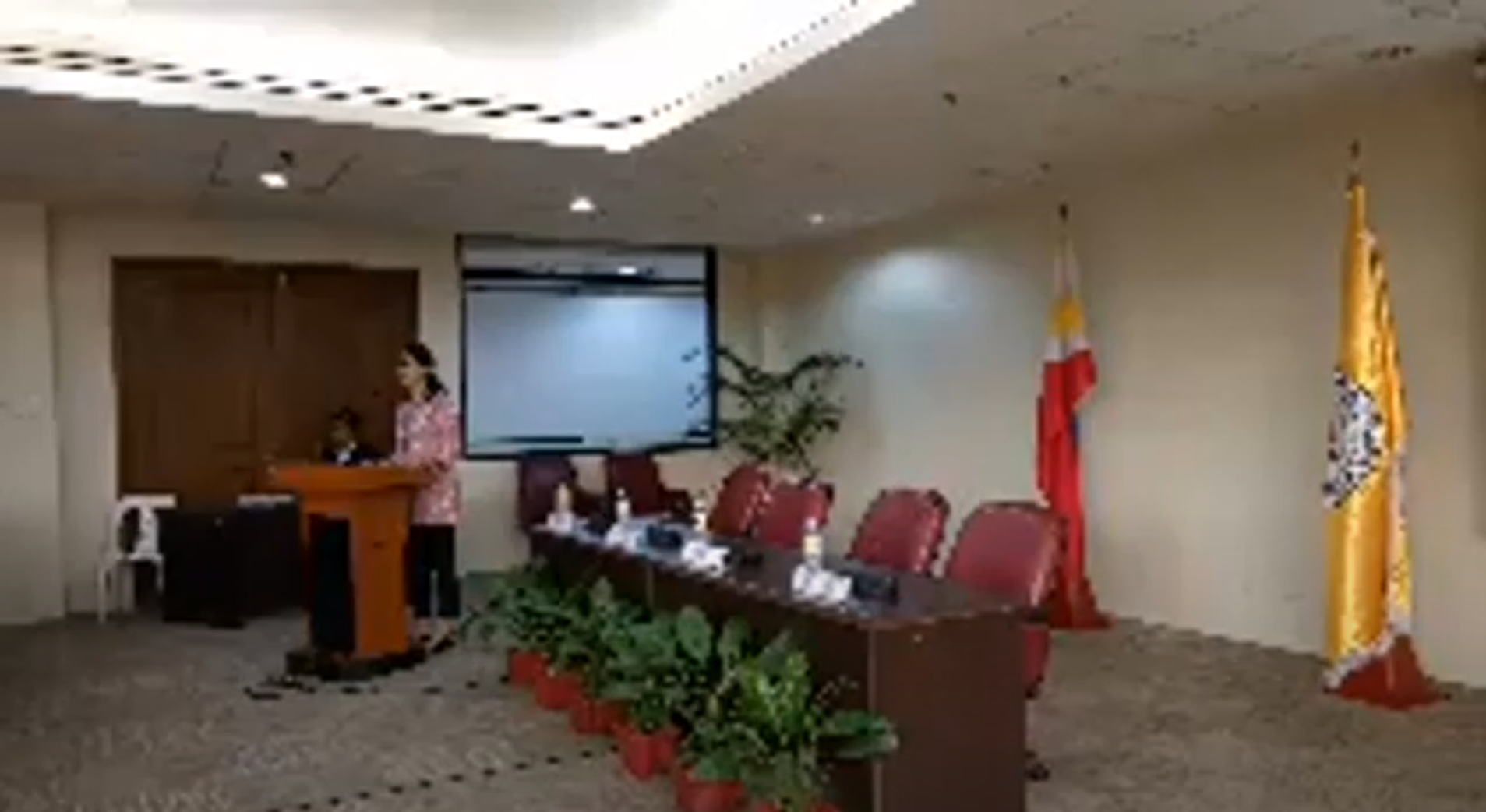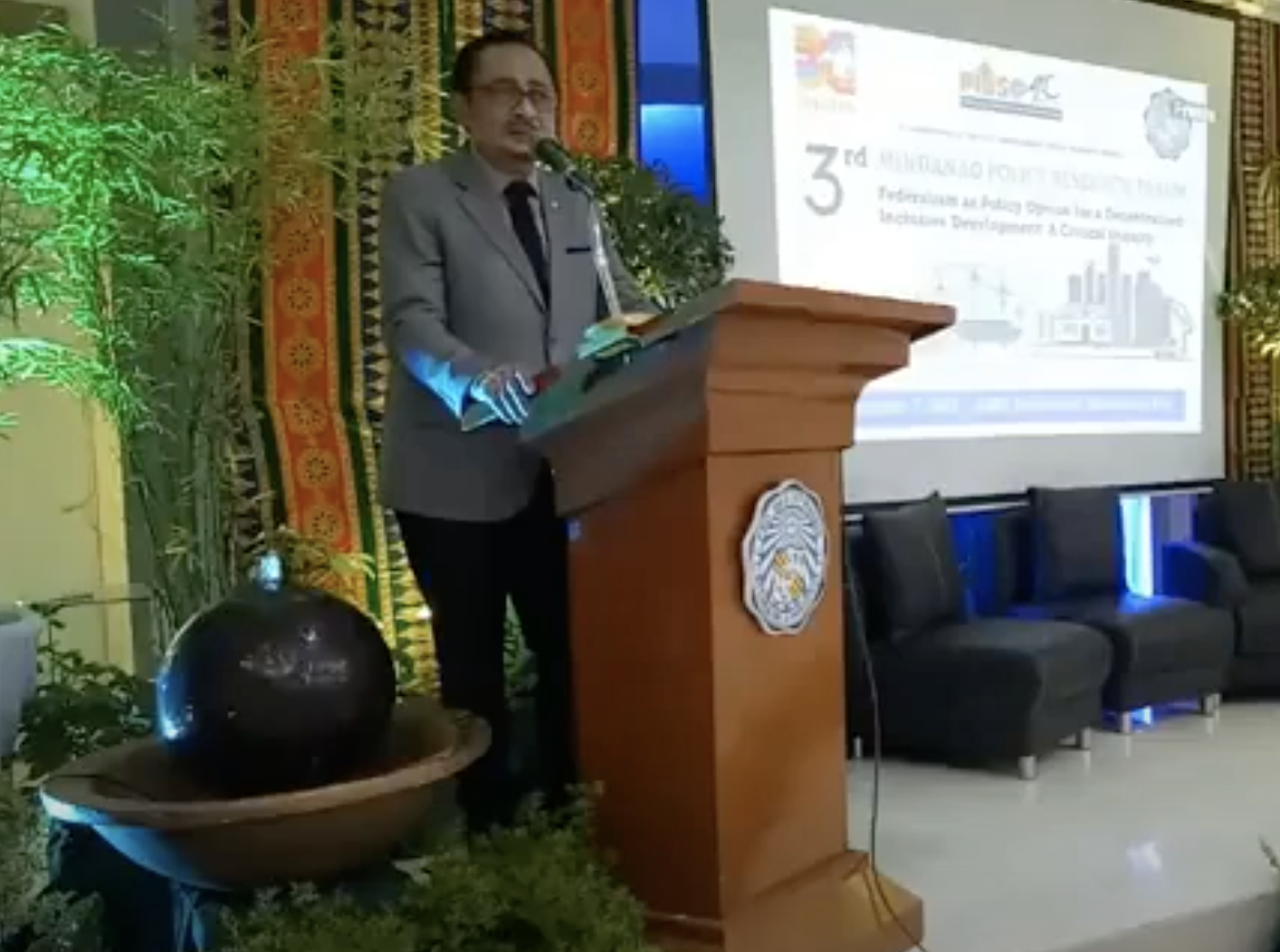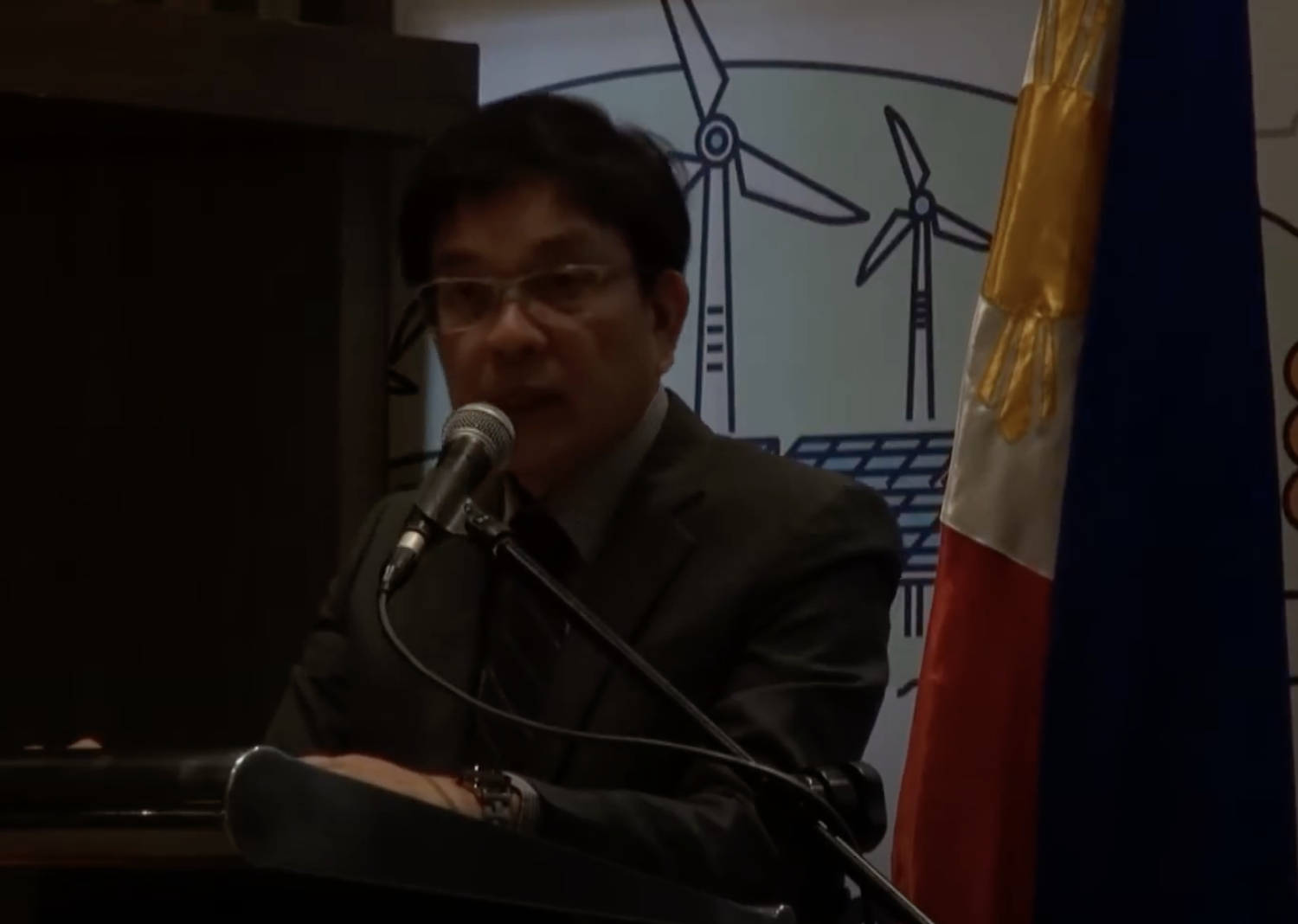Conclusion
BENEDICTO Bacani, executive director of the private group Institute for Autonomy and Governance, looks to the East for solutions to issues in the southern Philippines.
According to Bacani, to solve the Mindanao problem, with its multilevel issues and cultural, ethno-linguistic conflict, the Philippines should embrace a federal form of government.
“Federalism is the best political system,” Bacani said in a forum in Zamboanga in September. “We’ve seen that in India, Pakistan and Sri Lanka. And now Nepal, Malaysia, as well as the Philippines, are looking at it to solve the multi-ethnicity issues in a pluralistic society.”
According to Bacani, the unitary form of government is one of the reasons the peace agreement cannot be fully achieved in Mindanao.
“Actually, you don’t really need to shift to the federal system for the sake of the peace agreements’ implementation,” Bacani said. “You only need to amend the Constitution to accommodate it; meaning, you can have a substate feature under a unitary system as long as it is provided in the Constitution.”
However, Philippine Institute for Development Studies Senior Research Fellow Rosario Manasan also cited Pakistan as a model of federalism’s failure.
“One of the strongest examples is the old Pakistan, which broke [away from] the present Pakistan with its former eastern part formed into Bangladesh,” Manasan said in the same forum. “Of course were not saying that would automatically happen to us.”
She emphasized against making federalism as a magic bullet against resolving conflicts.
“Federalism would not necessarily prevent conflicts, as the experience from other countries [like Pakistan] show.”
Sovereignty
STILL, Hezekiah Concepcion, professor at the Ateneo de Zamboanga University , believes federalism can facilitate conflict-resolution better than the current unitary form.
He cited the US federal system for “a wealth of examples”.
Federal states can immediately act on the issues affecting their citizens without resorting to the national government, which would take time, Concepcion said.
“Among the Tausugs, for instance, there are cases that, according to our legal system, constitute homicide but [which] they can resolve among themselves,” he said. “There are family issues that can be resolved at the community level [by] applying local customs and traditions. These practices can be adopted and institutionalized in the areas of conflict resolution.”
He said that, in the Philippines, these practices would probably address the concerns of Filipino Muslims, as their culture is distinct, albeit they are part of a larger “nation” concept. However, for Naguib Sinarimbo, co-convener of the Bangsamoro Study Group, the Bangsamoro question, when translated into legal terms, is the issue of sovereignty.
“The issue of Moro is the lack of self-determination.”
Sinarimbo said the sovereignty of the Bangsamoro was lost when Spain sold the Philippines to the Americans in 1898. Prior to 1898, Sulu and Maguindanao are already full states. The sultanates have their own territory, people, government and sovereignty.
“Now, we still have the Bangsa-moro, the people, the government, and only the sovereignty is lacking,” he said. “Sovereignty is the only thing that is not provided by the constitution.”
Decentralization
AT the same forum, Benedicto Bacani, executive director of the Institute for Autonomy and Governance, pointed not on the issue of sovereignty but on decentralization.
Bacani explained that the current decentralization is governed by the national government through the Local Government Code (LGC). It is decentralization from the national government down to the regions, provinces, cities, municipalities and barangays.
“The political power is merely coordinative. There’s a planning body, but it has no political power,” he said. “This is fine in itself but, if we remain to be within the confines of this, with the local government units, you only decentralized functions.”
According Bacani, the second type of decentralization is through autonomous regions, which the Philippines has two: the Cordillera Administrative Region (CAR) and the Autonomous Region in Muslim Mindanao (ARMM) .
“In the Cordilleras, they don’t have organic law. The decentralization [there] is based on an executive order,” Bacani said. “But this is a special kind of decentralization, under Section 10 of the Constitution. You have the national government there, [true], but, for the first time, we have the second-tier or middle-level government, which are the autonomous regions.”
Elements
BACANI explained that, unlike the regional development councils, or RDCs, the autonomous regions have political powers. “They are governments in themselves. They have their own legislature, regional assembly, policy-making body, executive powers and, to a certain degree, judicial powers,” he said. “This so in the case of the ARMM, [which is implemented] through the Sharia Courts.”
According to Bacani, if the country shifts to a federal system, there will now be a middle-tier government not only for the ARMM or the CAR but in all of the regions.
“[It all depends] on how you will divide it, but you will really divide the Philippines, just like what you did with the ARMM and the CAR.”
Symmetry
HOWEVER, Bacani, whose Mindanao-based organization has been lobbying for peace in Mindanao, emphasized “that the kind of decentralization here [autonomous regions], under a political principle, is share [in power] or self-rule.”
“Hence, our political system actually already contains elements of federalism.”
The controversy, according to him, lies in federal states sharing power with the central government, which is expressed as “shared sovereignty”. He added that some federal government proposals are shying away from the actual sovereignty.
But that cannot be helped because that’s “one requirement of federalism”, he said.
Bacani added if politicians decide to pursue decentralization further and embrace the principle of shared rule the Constitution provides for the assignment of powers, “the central government has put limits to its sovereignty in favor of regional states”.
“And these powers cannot just be taken back like under the unitary system where the decentralization is merely administrative even if it has decentralized the power,” Bacani said. “Because that [decentralization of power] is still under the context of unitary where relationship is basically symmetric, or ‘of the same parts’.
Grounding
FOR Emmanuel Miral Jr., director general of the Congressional Policy and Budget Research Department, there’s another reason the 1987 Constitution birthed the autonomous regions and, later, inspired the enactment of the local government.
“The seeds for decentralization [federalism] are actually contained within the Constitution itself,” he said at the same forum. What Miral is worried is if federalism can really address another fetter, which is patronage politics.
He added this patronage system is so entrenched up to the barangay level, notwithstanding the LGC, which supposedly “frees” the local leaders from control coming from the national leadership.
“The local leaders need the support of the national leaders who control vast resources, and the national leaders need the local leaders who have direct control of the voters,” Miral said. “This symbiotic relationship feeds the patronage system.”
Structure
ACCORDING to Miral, voters, therefore, do not choose leaders on the basis of policy programs or ideology but on the basis of distribution of the patronage. This not only weakens the quality of programs being channeled to the citizens but also removes accountability from the public officials.
“This is also manifested in how our development plan is structured, including the budgeting. Instead of integrated factoring, the components are divided ‘sectorally’,” Miral said. “The government is also organized vertically, which prevents [it] from addressing problems that are geographical in nature.”
He added that real government coordination can only happen on the ground.
“So the highly centralized government cannot really reach its people who are [on] the ground.”
Still, Miral and the other experts agree the Constitution of the Republic of the Philippines provides the elbow room for tweaking the country’s political system.
Also, they all agree that, whether the country moves to apply a new form of how leaders govern, it is still the Filipino who should determine how they should be governed.
Likewise, Bacani offers this caveat: “If we are going to change, at least we should change for the better and not just for the sake of it.”
BENEDICTO Bacani, executive director of the private group Institute for Autonomy and Governance, looks to the East for solutions to issues in the southern Philippines.
According to Bacani, to solve the Mindanao problem, with its multilevel issues and cultural, ethno-linguistic conflict, the Philippines should embrace a federal form of government.
“Federalism is the best political system,” Bacani said in a forum in Zamboanga in September. “We’ve seen that in India, Pakistan and Sri Lanka. And now Nepal, Malaysia, as well as the Philippines, are looking at it to solve the multi-ethnicity issues in a pluralistic society.”
According to Bacani, the unitary form of government is one of the reasons the peace agreement cannot be fully achieved in Mindanao.
“Actually, you don’t really need to shift to the federal system for the sake of the peace agreements’ implementation,” Bacani said. “You only need to amend the Constitution to accommodate it; meaning, you can have a substate feature under a unitary system as long as it is provided in the Constitution.”
However, Philippine Institute for Development Studies Senior Research Fellow Rosario Manasan also cited Pakistan as a model of federalism’s failure.
“One of the strongest examples is the old Pakistan, which broke [away from] the present Pakistan with its former eastern part formed into Bangladesh,” Manasan said in the same forum. “Of course were not saying that would automatically happen to us.”
She emphasized against making federalism as a magic bullet against resolving conflicts.
“Federalism would not necessarily prevent conflicts, as the experience from other countries [like Pakistan] show.”
Sovereignty
STILL, Hezekiah Concepcion, professor at the Ateneo de Zamboanga University , believes federalism can facilitate conflict-resolution better than the current unitary form.
He cited the US federal system for “a wealth of examples”.
Federal states can immediately act on the issues affecting their citizens without resorting to the national government, which would take time, Concepcion said.
“Among the Tausugs, for instance, there are cases that, according to our legal system, constitute homicide but [which] they can resolve among themselves,” he said. “There are family issues that can be resolved at the community level [by] applying local customs and traditions. These practices can be adopted and institutionalized in the areas of conflict resolution.”
He said that, in the Philippines, these practices would probably address the concerns of Filipino Muslims, as their culture is distinct, albeit they are part of a larger “nation” concept. However, for Naguib Sinarimbo, co-convener of the Bangsamoro Study Group, the Bangsamoro question, when translated into legal terms, is the issue of sovereignty.
“The issue of Moro is the lack of self-determination.”
Sinarimbo said the sovereignty of the Bangsamoro was lost when Spain sold the Philippines to the Americans in 1898. Prior to 1898, Sulu and Maguindanao are already full states. The sultanates have their own territory, people, government and sovereignty.
“Now, we still have the Bangsa-moro, the people, the government, and only the sovereignty is lacking,” he said. “Sovereignty is the only thing that is not provided by the constitution.”
Decentralization
AT the same forum, Benedicto Bacani, executive director of the Institute for Autonomy and Governance, pointed not on the issue of sovereignty but on decentralization.
Bacani explained that the current decentralization is governed by the national government through the Local Government Code (LGC). It is decentralization from the national government down to the regions, provinces, cities, municipalities and barangays.
“The political power is merely coordinative. There’s a planning body, but it has no political power,” he said. “This is fine in itself but, if we remain to be within the confines of this, with the local government units, you only decentralized functions.”
According Bacani, the second type of decentralization is through autonomous regions, which the Philippines has two: the Cordillera Administrative Region (CAR) and the Autonomous Region in Muslim Mindanao (ARMM) .
“In the Cordilleras, they don’t have organic law. The decentralization [there] is based on an executive order,” Bacani said. “But this is a special kind of decentralization, under Section 10 of the Constitution. You have the national government there, [true], but, for the first time, we have the second-tier or middle-level government, which are the autonomous regions.”
Elements
BACANI explained that, unlike the regional development councils, or RDCs, the autonomous regions have political powers. “They are governments in themselves. They have their own legislature, regional assembly, policy-making body, executive powers and, to a certain degree, judicial powers,” he said. “This so in the case of the ARMM, [which is implemented] through the Sharia Courts.”
According to Bacani, if the country shifts to a federal system, there will now be a middle-tier government not only for the ARMM or the CAR but in all of the regions.
“[It all depends] on how you will divide it, but you will really divide the Philippines, just like what you did with the ARMM and the CAR.”
Symmetry
HOWEVER, Bacani, whose Mindanao-based organization has been lobbying for peace in Mindanao, emphasized “that the kind of decentralization here [autonomous regions], under a political principle, is share [in power] or self-rule.”
“Hence, our political system actually already contains elements of federalism.”
The controversy, according to him, lies in federal states sharing power with the central government, which is expressed as “shared sovereignty”. He added that some federal government proposals are shying away from the actual sovereignty.
But that cannot be helped because that’s “one requirement of federalism”, he said.
Bacani added if politicians decide to pursue decentralization further and embrace the principle of shared rule the Constitution provides for the assignment of powers, “the central government has put limits to its sovereignty in favor of regional states”.
“And these powers cannot just be taken back like under the unitary system where the decentralization is merely administrative even if it has decentralized the power,” Bacani said. “Because that [decentralization of power] is still under the context of unitary where relationship is basically symmetric, or ‘of the same parts’.
Grounding
FOR Emmanuel Miral Jr., director general of the Congressional Policy and Budget Research Department, there’s another reason the 1987 Constitution birthed the autonomous regions and, later, inspired the enactment of the local government.
“The seeds for decentralization [federalism] are actually contained within the Constitution itself,” he said at the same forum. What Miral is worried is if federalism can really address another fetter, which is patronage politics.
He added this patronage system is so entrenched up to the barangay level, notwithstanding the LGC, which supposedly “frees” the local leaders from control coming from the national leadership.
“The local leaders need the support of the national leaders who control vast resources, and the national leaders need the local leaders who have direct control of the voters,” Miral said. “This symbiotic relationship feeds the patronage system.”
Structure
ACCORDING to Miral, voters, therefore, do not choose leaders on the basis of policy programs or ideology but on the basis of distribution of the patronage. This not only weakens the quality of programs being channeled to the citizens but also removes accountability from the public officials.
“This is also manifested in how our development plan is structured, including the budgeting. Instead of integrated factoring, the components are divided ‘sectorally’,” Miral said. “The government is also organized vertically, which prevents [it] from addressing problems that are geographical in nature.”
He added that real government coordination can only happen on the ground.
“So the highly centralized government cannot really reach its people who are [on] the ground.”
Still, Miral and the other experts agree the Constitution of the Republic of the Philippines provides the elbow room for tweaking the country’s political system.
Also, they all agree that, whether the country moves to apply a new form of how leaders govern, it is still the Filipino who should determine how they should be governed.
Likewise, Bacani offers this caveat: “If we are going to change, at least we should change for the better and not just for the sake of it.”









